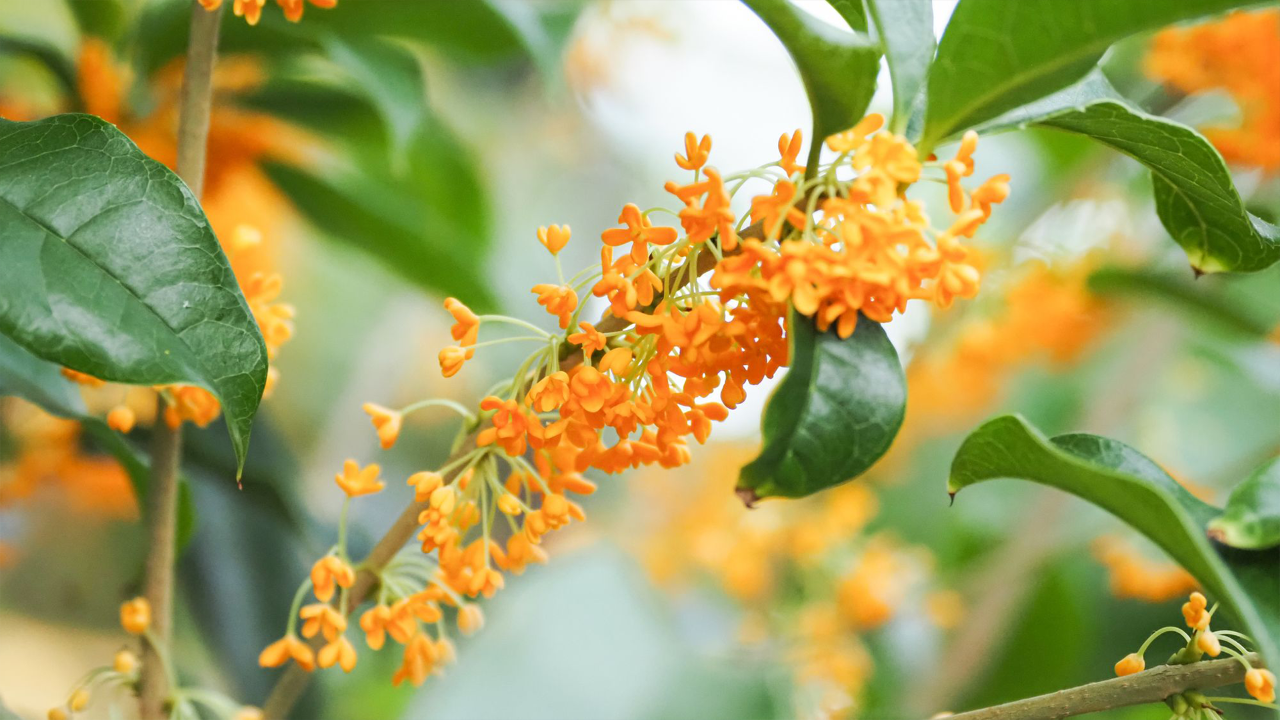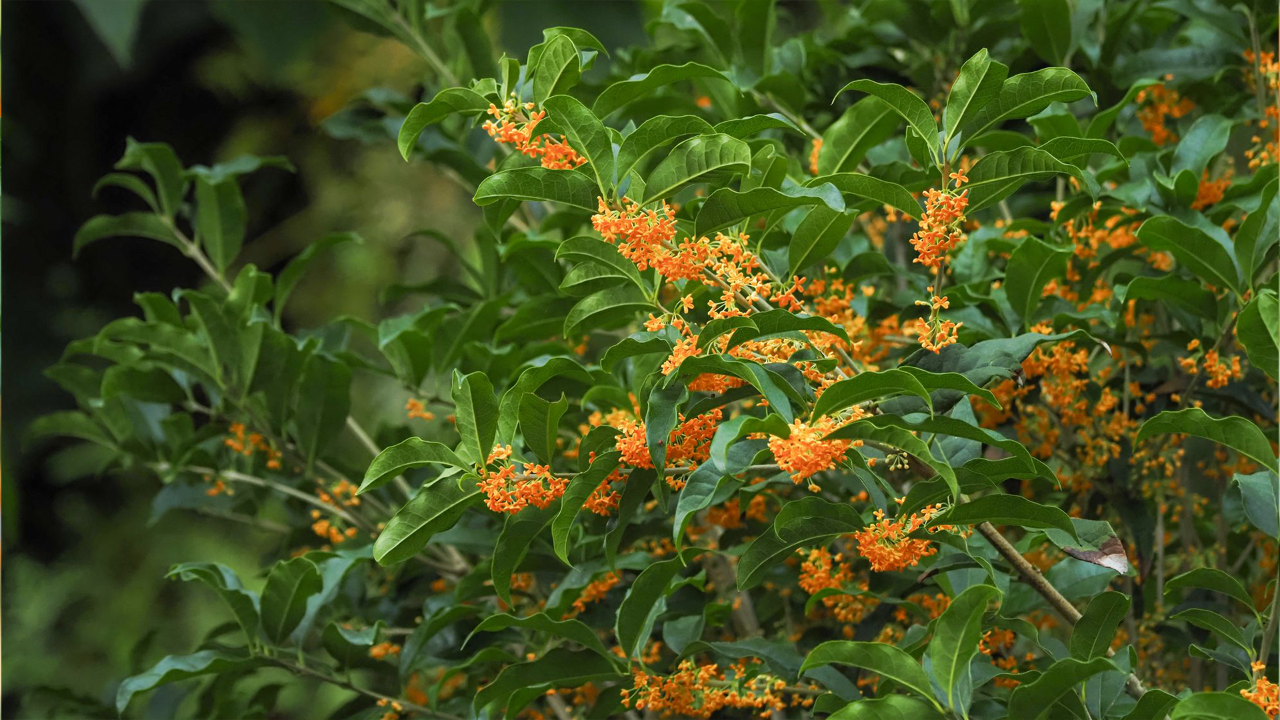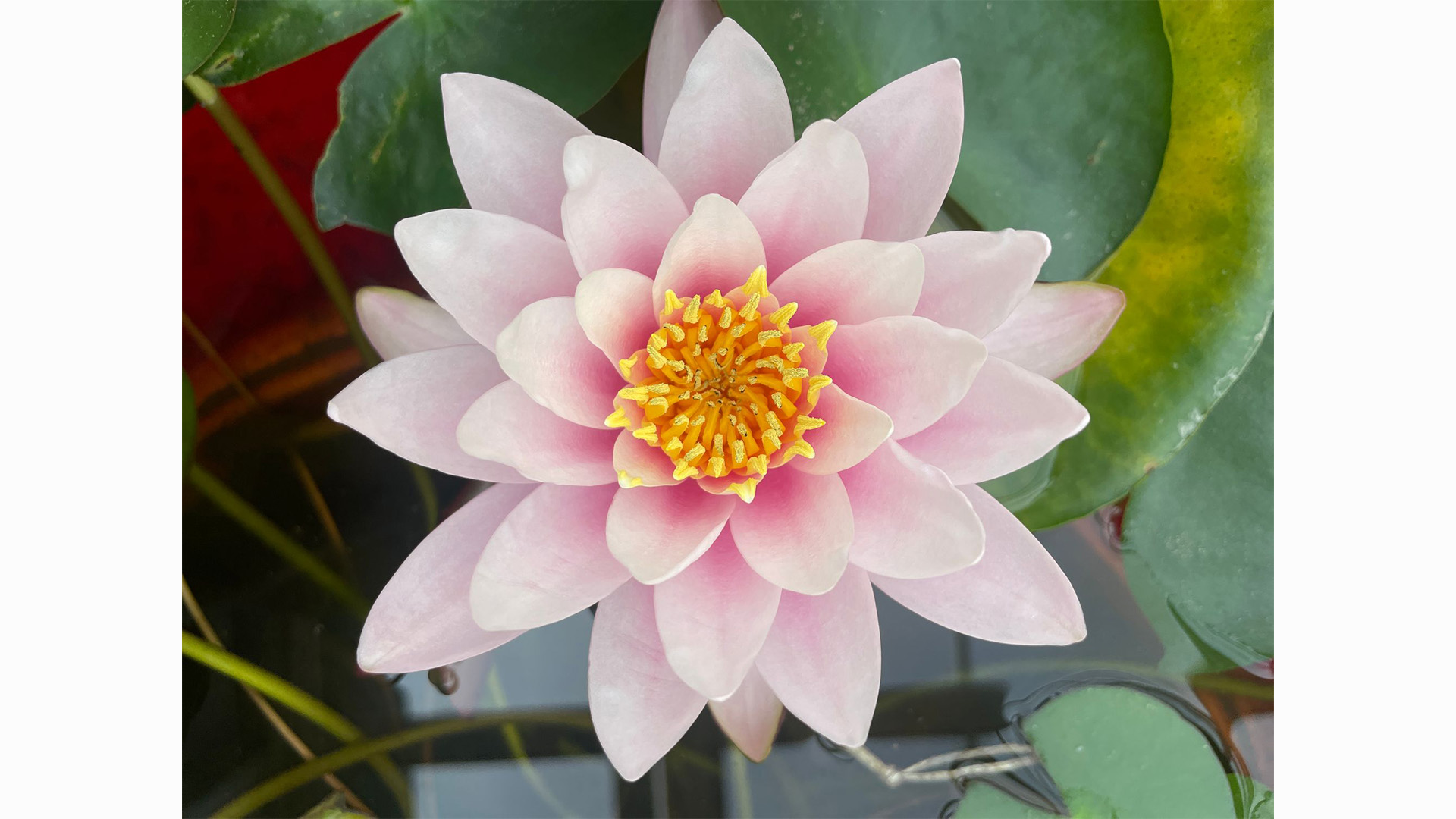
Osmanthus is a genus of flowering plants in the olive (Oleaceae) family, comprising about 30 species, all native to Asia, particularly China, Japan, and the Himalayas. Many Osmanthus species are renowned for their fragrant flowers. Among them, Osmanthus fragrans var. aurantiacus especially grabs attention with its vibrant tangerine blossoms and intoxicating scent, which is stronger than the scent of the more commonly seen Osmanthus fragrans with cream-coloured flowers, making it a prized addition to temperate gardens and landscapes.
 In this comparison, you can see that the difference of the flower colours between Osmanthus fragrans (left) and its variety - Osmanthus fragrans var. aurantiacus (right). Although this trait is rather subtle, it is stable and distinctive enough to separate these two populations apart, in terms of botanical classification.
In this comparison, you can see that the difference of the flower colours between Osmanthus fragrans (left) and its variety - Osmanthus fragrans var. aurantiacus (right). Although this trait is rather subtle, it is stable and distinctive enough to separate these two populations apart, in terms of botanical classification.
In botanical nomenclature, the "var." in the scientific name stands for "variety", a taxonomic rank below a species, that denotes a naturally occurring special variation within that species. The variation is stable but rather subtle, such as a difference in flower colour, leaf shape or size, and this variation, which occurs in nature without human intervention, can be used to distinguish one population from the other. In the case of Osmanthus fragrans var. aurantiacus, the "variety" indicates a specific form of the Osmanthus fragrans species characterized by its unique trait - the vibrant tangerine flowers. In Latin, ‘aurantiacus’ means orange-coloured.
 Its small flowers are clustered and emit a strong, sweet fragrance that can perfume the surroundings. The leaves are evergreen, lance-shaped, and leathery, providing a lush green backdrop to the vibrant blooms. The tree typically reaches about 3-4 meters in height.
Its small flowers are clustered and emit a strong, sweet fragrance that can perfume the surroundings. The leaves are evergreen, lance-shaped, and leathery, providing a lush green backdrop to the vibrant blooms. The tree typically reaches about 3-4 meters in height.
The use of osmanthus flowers dates back centuries, particularly in Chinese culture. The flowers are often used to scent teas, such as the famous osmanthus tea, which is known for its delicate aroma and health benefits. They are also used in culinary dishes, particularly in desserts and sweet soups, to impart a unique flavour. Additionally, the flowers are used in traditional medicine and cosmetics, valued for their soothing and fragrant properties.
Come to Cloud Forest and experience both the vibrant flowers and sweet scent of the orange sweet osmanthus, near the lift lobby at the base of Cloud Forest mountain!
Zeke Chen, Manager (Conservatory Operations)
Ever since his tiny hands could hold on to a small toy shovel and sowed the first apricot seed in the garden, the passion for plants has started to grow in Zeke’s heart.



